Food security: a global challenge
Introduction
The food crisis has revealed the impact of disinvestment in agriculture
Cyclical causes: Drought and overheating markets
Structural causes: Declining investments and levelling-off of yields
Flawed economic policies
Inscreasing malnutrition poses a challenge to farm policies
A billion undernourished people
Subsistence farming: Forgotten by public policies and neglected by private investments
Meeting 2050’s food needs will require increasing yields and reinvesting in agriculture
Europe and North Africa have shared agricultural interests
The priority now is to help Sub-Saharan Africa achieve a successful green revolution
West Africa could meet its food requirements
Statements by the international community which have not led to action
The United Nations’ Secretariat and its Framework Programme
The reformed Committee on Food Security
The United States is spearheading the initiative and relying upon the World Bank
Agricultural market regulation may deal with only part of the problem
Price instability in developing countries depends upon endogenous factors
Is it possible to satisfy both producers and consumers?
Designing new agricultural policies is crucial as the funding to implement them
Agricultural policies which promote investment and entrepreneurism
Proposal for an economic pro-business or pro-corporate approach
For an “agricultural G20” devoted to food security
Bernard Bachelier,
Director of the Foundation for World Agriculture and Rural Life (FARM).
The food crisis which struck the world in 2008 brought back the agricultural issue as one of the international community’s top priorities. It is obvious that new food shortages may occur. Hunger is not declining as had been hoped. Since spring 2008, all global conferences have been devoting one item on their agenda to food security and pledged new funding. However, those statements did not translate into action. Public opinion is finding it hard to understand what is going on and to distinguish between what is intended for media impact and what will initiate real action.
In November, France began chairing the G8 and the G20 for a year. Food security will be on the Summit’s agenda, but will consist of a technical follow-up to experts’ findings on the issue. The French Presidency intends to exert its political influence on market regulation. As announced by Nicolas Sarkozy, it is preparing a G20 initiative on agricultural prices. The President of the French Republic has designated regulation of the agricultural commodities markets as one of the French presidency’s four top priorities. This objective will give rise to a meeting of the G20 ministers in charge of agriculture – a first in a world dominated by finance.
This emphasis on prices is certainly understandable. In fact, it was their sudden rise which triggered the food crisis. Yet this was just a symptom of a far deeper problem, like a fever signalling an illness. The main cause of the planet’s food imbalance is the decline in investments in agriculture, particularly subsistence farming in poor countries. If the problem is to be thoroughly dealt with, new agricultural policies need to be formulated which are endowed with adequate funding to ensure their implementation. Controlling price volatility will not suffice to give farmers in developing countries the means to expand and stabilise the production levels needed to ensure their fellow citizens’ food security.
At a time when the international community is gathering to readdress these issues, a review of the facts will make it possible to better grasp what is at stake.
The food crisis has revealed the impact of disinvestment in agriculture
The 2008 food crisis revealed to the media, and through the latter to the public, the lack of interest which had been plaguing agriculture for many years. This situation had long worried experts. As early as in 2006, the World Bank had decided to devote its 2008 World Development Report to the agricultural issue. This decision had been made before the crisis. The Report was completed in spring 2007 and released in November 2007, yet it was the food riots which, in late 2007, and to a greater extent in spring 2008, put an end to media indifference. These riots, which struck dozens of cities in poor countries, were caused by soaring prices there, particularly those of wheat, rice, and grain. The price of rice tripled in the first three months of 2008. This price hike was due as much to cyclical, as to structural, factors.
Cyclical causes: Drought and overheating markets
Among the cyclical causes, the most important was climate phenomena which translated into a succession of poor crops in Australia and in Eastern Europe. Drought, however, did not account for it all. The financial markets amplified the phenomenon’s effects. In fact, early 2008 marked the first phase of a credit crisis resulting from a distrust of the financial markets and increased prices for all commodities. Freed from the financial markets, some liquidities were used to speculate on agricultural markets. There was also what may be called a “State speculation” resulting from the ban on exports agreed upon unilaterally by some countries. This was the case for the rice market, whose movements were amplified by the closing of the borders of India, Thailand and Vietnam – the leading suppliers of Sub-Saharan Africa.
The third cause often cited as having caused the 2008 food crisis is the biofuel production. Some EU citizens have objected to their increased use and accused them of diverting production from its food-related purpose and of inflating prices: “Eat or drive, you have to choose” proclaimed certain media outlets. In reality, the 2009 price drop showed that the production of biofuels had no real impact on prices. Only three economic entities pursue a deliberate biofuel policy: Brazil, which produces them from sugar cane; the United States, which primarily uses corn; and the European Union, which is banking on sugar beets and oilseed crops. The European Union has set a target of a 10% biofuel integration into all fuels used for transports by 2020. The United States, on the other hand, wants to quadruple its production by 2022. Brazil’s petrol already contains 20 to 25% ethanol. These are still moderate objectives. Biofuel production currently occupies 2% of the world’s farmland. This figure will rise to 4% by 2050, according to the United Nations Food and Agriculture Organization (FAO).
Analyses have shown that most of the transmission of prices from biofuel crops to foodstuffs came from American corn, which is also a staple diet in Latin America. The quantity of American corn used for biofuels doubled between 2005 and 2007, increasing from 40 to 80 million tonnes. Yet the role of corn-based biofuel itself needs to be considered in context, because the quantities destined for animal feed and human consumption have remained steady. At any rate, blaming bio-fuels equates to using the wrong target. Their consumption is steady and rising in a progressive and scheduled manner; not only does it not foster volatility, it actually counteracts it. Moreover, Europe and the United States have retained the necessary agricultural potential to meet market needs, even if, ultimately, the world will certainly not be able to subsist on their surplus stocks.
Structural causes: Declining investments and levelling-off of yields
There are also structural causes. In 2007, world grain stocks were exceptionally low, a situation which was not due to crop failures alone. It was the outcome of agricultural policies pursued for the previous twenty some years – the product of disinvestment in agriculture. Rich countries no doubt continued to sustain their agriculture through massive public transfers. The European Union’s Common Agricultural Policy’s budget was thus preserved until 2013 by the agreement entered into by Jacques Chirac and then-Chancellor of Germany Gerhard Schröder, while the United States opted for a new 2008 Farm Bill which maintained budgetary aid for U.S. agriculture. Agricultural policies have nonetheless been undergoing major changes which have had significant consequences. They have helped to eliminate stocks by regulating production through the fallowing of farmland. Under normal circumstances, that has the advantage of preventing market imbalances by selling surpluses at a discount. In the absence of reference stocks, however, trade no longer has an alert mechanism and cannot react quickly in the event of a crisis.
The policy having the most devastating impact remains the slowdown in yield growth. On a global scale, grain yields from 1960 to 2000 increased by 2.5% per year, thereby multiplying production by 2.6. Since the early 2000s, productivity gains have been sluggish, levelling off, on average, at 1% per year. There are several reasons for this phenomenon. First, developed countries – particularly Europe – have focused their attention on environmental protection, thereby rejecting farm intensification and condemning productivism, which came to be viewed as the source of all evils and pollutions. They have forgotten that it was thanks to increased yields realised through improved techniques that their food production had become so cheap and safer for consumers.
This levelling of yields does not just concern Europe. It can be imputed to the drastic decline in public funds devoted to agriculture and agricultural research, as stated in the World Bank’s 2008 report. In 2006, the share of public aid allocated to agriculture dropped to 4%, even though it had reached almost 20% in the late 1970s. Sub-Saharan African countries devote no more than 4% of their national budgets to agriculture.
Flawed economic policies
This shrinking of agriculture’s share in the public budgets is a consequence of the structural adjustment policies imposed by the International Monetary Fund (IMF) in order to grant debt reductions. Under its influence, the public funding of agriculture, as well as that of agricultural public services, were dismantled and have become victims of economic reforms. Like any other economic activity, agriculture still cannot be funded by the private sector alone. While such a scenario could be envisaged in countries with capital such as Brazil, the disengagement of the public sector would paralyse poor countries’ food production. Low profitability, climate risk, economic uncertainties, production fragmentation and the lack of land legislation can only dissuade investors.
Furthermore, the prevailing doctrines favour the lowest possible consumer prices and to reach that goal, the easiest option is to resort to cheap imports. However, international market prices have been both stable and low for more than two decades. Cheap imported wheat, rice and milk satisfy urban consumers; governments, for whom they ensure social peace; importers, which often have close ties to political leaders; and international financiers, since they limit national budget charges. Essentially, nearly everyone but farmers has reasons to be content. Indeed, these strategies are ruining local farming, dissuading investors and preventing the creation of national trading channels. This harmful balance functions as long as world prices are low. If prices rise suddenly, the system explodes and urban trade cannot call upon local producers who, cut off from the markets and access to credit, cannot take advantage of these opportunities.
It is this approach which the food crisis has called into question. It temporarily disrupted it because the exporting countries’ abundant production in 2009 made it possible to promptly return to lower prices, but it also sounded an alarm. Yet not everyone seems to be conscious of the risks which may adversely affect the planet’s food security if nothing changes.
Inscreasing malnutrition poses a challenge to farm policies
In 2008, malnutrition soared higher. What is meant by “malnutrition”? According to the definition adopted by the FAO at the 1996 World Food Summit, “Food security exists when all people, at all times, have […] access to sufficient, safe and nutritious food […] for an active and healthy life.” This definition is based upon four pillars:
- physical availability of food which relies on agricultural production and trade: supply;
- physical – and above all economic – access, which relies upon the individuals’ ability to obtain food and therefore upon the relations between farm prices and income: consumer creditworthiness;
- the use of food and its ability to meet individual needs, their condition, their environment, local deficiencies and consumer habits;
- stability; i.e., continuity of access and lack of shortages: sustainable management which relies upon public policies which provide against relevant contingencies.
Every year, the FAO publishes a report, “The State of Food Insecurity in the World,” which assesses the number of undernourished people on the basis of indicators which take into account the various characteristics of groups of individuals such as age, gender and occupation.
A billion undernourished people
The first World Food Conference was held in November 1974. At that time, there were 900 million undernourished people. Twenty-two years later, according to the 1996 World Food Summit, this figure was still 850 million. The Summit’s participants pledged “[their] political will and [their] common and national commitment to achieving food security for all […] with an immediate view to reducing the number of undernourished people to half their present level no later than 2015.” This commitment was taken up again in the Millennium Development Goals adopted by the UN Millennium Summit which met in New York from 6 to 8 September 2000. However, as of 2002, the “World Food Summit: Five Years Later” found that the number of undernourished people still exceeded 800 million. It is common knowledge that the Millennium goal will not be reached.
The food crisis – and later the economic crisis – occurred in this context. The number of undernourished people once again rose, to 915 million in 2008 and over a billion in 2009, under the combined effect of higher farm prices and a decline in North-South transfers. The FAO is hoping for a slight decrease in 2010; nonetheless, this figure is still unacceptable for the world in which we live.
The two continents which suffer the most from hunger are Asia, with 640 million undernourished people (60% of the total number of undernourished people) and Sub-Saharan Africa with 260 million (a quarter of the total). It is Africa which has the highest ratio of undernourished people to the total population: 36%. Three-quarters of its chronically hungry people live in rural areas and a majority of them live off the land. It is common knowledge that malnutrition is a consequence of poverty but the fact that it is closely linked with rural poverty is often overlooked.
Subsistence farming: Forgotten by public policies and neglected by private investments
The current situation stems from a simplistic conception of subsistence farming which keeps the latter on the economy’s sidelines. To emerge from poverty, farmers need access to the market. They must be able to act as economic actors: access credit, acquire means of production, farm inputs and small machinery, and sell their production. In order to overcome shortages or gain access to a more diversified diet, they need to be able to buy what they do not produce by selling their surpluses.
Two factors account for this situation: the way agricultural policies supporting subsistence farming are designed and the decline of public funding for the improvement of this type of farming. However, the conception of subsistence farming which has prevailed for several decades among international bodies and some NGO circles translates into a de facto freeze. Meeting familial needs through external aid keeps households dependent. Distrust of the economy, the markets and innovation prevents any sustainable progress. In concrete terms, external aid is implemented through projects which temporarily alleviate the most economically disadvantaged by distributing fertilizer and seed, along with some technical advice. Such projects only concern a very small percentage of farmers, and for a limited time. They do not help farmers or their organisations to build up some capital, which would enable them to achieve autonomy. They serve more as a billboard for rich countries than as a coherent development strategy. The funds committed by international solidarity to subsistence farming in poor countries are insignificant compared to the real needs. The way they are spent further reduces their impact. The poor results of the fight against food insecurity are the direct consequence of the way this issue is being handled.
Meeting 2050’s food needs will require increasing yields and reinvesting in agriculture
Future needs will lead to a further deterioration of the world food balance if we continue to sustain the status quo. The FAO estimates that world food production will need to increase 70% by 2050 to feed the 9 billion people who will then inhabit our planet; 90% of this increase will have to take place in developing countries and 80% will need to result from higher agricultural yields. This is a crucial point. Increased production cannot be expected to result from extending crop areas. The latter will remain limited. The fact is that what the planet needs is a new form of production intensification, but intensification nonetheless.
South America, Asia and Africa are experiencing contrasting situations. Thanks to its land and water, and capital to exploit both, South America – with Brazil in the lead – will become an even greater exporting region than it is today. Asian countries such as China and India will be confronting the dual challenge of implementing a new leap in production while also reducing the environmental risks already curbing the effects of the green revolution, inasmuch as their land reserves are limited. Economic growth will have a positive impact on markets, allowing a portion of farm migrants to be absorbed, bearing in mind that demographic and social imbalances may occur at any time, drawing governmental concern. Yet economic growth will also lead to a diversification in nutrition behaviours towards products of animal origin requiring more crop areas. In any event, Asian governments need to both fund and protect their agriculture and ensure that they have a sufficient supply, which explains the Indian, Chinese and Korean investments in Africa or in former Soviet Union countries. They will also need to improve the internal operation of their markets, as shown by the difficulties experienced by India, which finds itself in the paradoxical situation of having to endure serious famine and register extensive crop losses, due to a lack of effective marketing channels.
Europe and North Africa have shared agricultural interests
North Africa and the Near East will remain structurally deficitary because of the limits which drought and competition over water resources have imposed upon agricultural land. The quantities of grain which they import every year varies, depending upon rainfall. They also depend upon the national budgets’ capacity to subsidise commodities in order to contain consumer prices. Morocco, thanks to its dynamic economy, and Algeria, thanks to its oil, avoided the impact of the food crisis. This is not true of Egypt, which is still one of the most vulnerable countries because of its fragile economy and political tensions. These factors obviously have made it one of the most susceptible to the closing of exports unilaterally decided by Russia during the summer of 2010.
The European Union must consider that the fate of the populations inhabiting the southern shores of the Mediterranean Sea are partly its responsibility. Food requirements certainly constitute a market for European producers, but the top priority is to modernise agrarian structures through the development of domestic markets. Such modernisation calls for diversification of productions. Morocco’s successful milk production is an example of the local cooperative movement. French sectors may participate in the creation of economic channels, in the oil-seed crop sector, for example.
How can Europe plan on managing migratory flows and promoting better management of fragile ecologies without helping to improve the status of millions of poor farmers? The Union for the Mediterranean (UfM) initiative spearheaded by Nicolas Sarkozy and Henri Guaino is facing extreme political reluctance. Even if no miracle is to be expected from regional trade hindered by political pressures, the UfM could provide a platform for seeking a consensus on shared agricultural issues, including not only North-South and South-North trade but also economic partnerships between agricultural and agro-industrial sectors.
The priority now is to help Sub-Saharan Africa achieve a successful green revolution
Sub-Saharan Africa deserves special attention. Close to Europe, it remains a poor region whose economy is essentially agricultural. Yet this agriculture has not yet undergone intensification efforts. Its grain yields are still the world’s lowest, about 13 quintals per hectare, as compared to the world average of 32 quintals, and to the industrialised countries’ 50 quintals. There are many farmers, however. Only 230 million hectares are being farmed out of a potential – estimated by the FAO – of over 1 billion hectares of agricultural land. Its water sources are abundant, though unevenly distributed. What is lacking are the means to optimally exploit them.
Indeed, Sub-Saharan Africa is the region in the world most adversely affected by structural adjustment policies and the States’ disengagement. The growth rate of about 6% in the last few years can be mainly imputed to the export of raw materials. Due to a lack of productive investments, Sub-Saharan Africa does not possess the engines which have driven the emerging countries’ agricultural economy.
Numerous reasons have been advanced to explain this situation: the weakness of governments, conflicts and wars, exchange rates which – in the euro zone – penalise exports, the continent’s political fragmentation, climatic constraints, not to mention the health problems weighing heavily upon the working classes. Nonetheless, we should not overlook the ramifications of the economic policies imposed by donors. Nothing has been substituted for the interventionist and costly public policies which have been justifiably questioned. National and international public authorities have abandoned agriculture. Export crops, such as cocoa beans, or cotton, or even those subject to industrial processing such as palm oil, managed to do well, but food crops were actually caught in a blind spot, which reopens the question of how public policies are formulated and agricultural financed.
West Africa could meet its food requirements
As the Foundation for World Agriculture and Rural Life studies have shown, West Africa is perfectly capable of meeting its food requirements. Even though its population has doubled in the last twenty-five years, its regional crop productions have more than tripled. Food production has increased from 59 million tonnes in 1980 to 212 million in 2005. Yet 70% of this increase was achieved by expanding crop areas and 30% by increasing yields. This ratio is the opposite of what applies to the rest of the world. Agriculture has not been intensified. According to the FAO, the region has 236 million hectares of cultivable land, but only 24% of this potential is being farmed, or 55 million hectares, excluding the 119 million hectares of grazing land.
It is estimated that cultivated land can be increased by 50%. By doing so, yields would double. This doubling of yields depends upon water control. Water resources not only exist, but potentially irrigable land exceeds 10 million hectares. In addition, primarily depressed areas, which can benefit from local water reservoirs, offer a major potential of from 11 to 16 million hectares. The problem raised by these developments is that of investment capabilities. The necessary funds cannot be made available from local government budgets. That should be made a priority and there has to be a genuine effort to promote African agriculture.
Irrigation development is indispensable to satisfy rice needs, even though the region relies upon importing 55% of its supply. It is estimated that by 2025 the demand for rice to feed 455 million inhabitants will total 22 million tonnes, or slightly less than 7 million hectares yielding 5 tonnes per hectare. The land area currently dedicated to rice-growing is 5 million hectares, with a yield of 1.67 tonnes of paddy per hectare[?], yet the average yield within the Office du Niger area – which is already 4 tonnes per hectare – shows that such objectives are not beyond reach.
West Africa could feed all of its inhabitants by 2025. African farmers can produce that much and the region’s resources would allow it. Investments must be made in agriculture. The African states cannot do it alone. They need the assistance of the international community.
Statements by the international community which have not led to action
What is the status of the spring 2008 mobilisation of world leaders? At the institutional level, diplomatic circles had lively discussions about it, but a very small amount of funds were actually freed up, conformism sidetracked discussions on agricultural policies, etc., so we shall try to shed more light on this.
During his speech of 6 June 2008 at the World Food Summit convened by the FAO in Rome, French President Nicolas Sarkozy launched the idea of a Global Partnership for Agriculture, Food Security and Nutrition, whose objective was to improve coordination of the international system and to endow it with a group of experts as was done with the climate issue, and with means to promote a new impetus for agricultural policies. Apparently all that has been seen is an ever-growing number of would be coordinators.
The United Nations’ Secretariat and its Framework Programme
The first candidate body is a United Nations team created by Secretary- General Ban Ki-Moon in April 2008. Its official name is self-descriptive: Coordination Team of the UN System High Level Task Force on the Global Food Security Crisis. This body defined a Comprehensive Framework for Action (CFA) intended to guide the multilateral and national actors’ initiatives. Its supporting document, written in UN style, is directed at specialists in this type of diplomacy. It is hard to imagine how it can reach the actors. Its organisation is now comprised of some twenty experts in New York, Geneva, and Rome. Funding for its 3.4 million-dollar budget comes from the United Kingdom (1 million), Iceland, France, Switzerland and the World Bank.
The reformed Committee on Food Security
The other major international coordination candidate is the FAO. Its Director-General, Jacques Diouf, fought to prevent Ban Ki-moon from relieving him of his duties and strengthened the Committee on World Food Security (CFS) created after the 1974 World Food Conference to ensure the monitoring of the world’s food situation. The reform, supported by France, opened the CFS to the various actors of the world food system. France also spearheaded the creation, on 3 September 2010, of the High Level Panel of Experts on Food Security and Nutrition (HLPE). The CFS Chair is Noel De Luna. Dr S. Swaminathan, the Father of the Green Revolution in India, was elected Chair of the panel of experts. Currently, the CFS has the institutional authority to handle coordination, even though there may be some doubt as to the ability of large gatherings to make decisions and affect government strategies.
Since 2008, the G8 and the G20 have included food security on their agenda. In 2009, the G8 industrialised countries adopted a Statement on Global Food Security, the Aquila Food Security Initiative (AFSI). The signatories agreed “to act with the scale and urgency needed,” and to mobilise 20 billion dollars over three years. This figure had already been mentioned after the Rome conference of 6 June 2008. In any case, each of the actors remains responsible for implementing it. It is not known whether this involves new funding and what the latter’s destination is. It is merely an announcement.
In addition, the Aquila Declaration recommends strengthening global governance and cites all the coordinating bodies without clarifying their respective duties. While it is true that the G8 is not a coordinating body, a few weeks later, on 24 and 25 September 2009, the G20 put the issue on its Pittsburgh meeting’s agenda and recommended, at the United States’ insistence, to call upon “the World Bank to work […] on setting up a multilateral trust fund” in order to support innovative actions and programmes such as the Comprehensive Africa Agriculture Development Programme (CAADP). Commitments in funding amount to 22 billion dollars. Nothing is known of the 22 billion mentioned in Pittsburgh, any more than of the Aquila’s 20 billion. Yet the United States has secured a recommendation for the creation of a special fund to be managed by the World Bank – an idea which Europeans opposed.
The United States is spearheading the initiative and relying upon the World Bank
On 22 April 2010, the U.S. Secretary of the Treasury announced the creation of the Global Agriculture and Food Security Program. As anticipated, the fund will be managed by the World Bank. It was immediately endowed with 900 million dollars, 475 million of which came from the U.S. Funding sources are the United States, Canada, Spain, South Korea and the Bill and Melinda Gates Foundation (30 million dollars). Neither the European Union nor France are funding countries. Thus, the United States has taken over the leadership the fight against food insecurity. Its acting staff is located in the heart of Washington DC, within the triangle formed by the White House, the World Bank, the IMF and the U.S. Congressional Building. The special fund is not a coordinating body, but something much better since it is endowed with both limited governance and financial authority.
At the same time, the United States launched its own strategy for fighting against food insecurity, “Feed the Future,” a highly structured programme with clear choices. This strategy implemented by the Obama administration focuses on supporting the agricultural production of poor countries, thereby straying from the country’s traditional approach to food aid.
The European Union’s refusal to take part in this initiative is a historic error. Once again, it results from lack of strategic vision and poor responsiveness (at that time, the European Commission’s new authoritative bodies, commissioners, etc., were being nominated). This lack of participation is all the more regrettable in that in late 2008, the European Union had released a special credit of 1 billion euros. Unfortunately, the although the exiting Commission’s technocrats had managed to spend this billion without making any political, strategic or operational impact. Conversely, the transparency of U.S. initiatives leaves some room for hope and inspires regret, by contrast, for the vagueness of the European positions.
Agricultural market regulation may deal with only part of the problem
President Sarkozy has announced that France would include the issue of regulation of commodities markets – notably that of agricultural products – on the agenda of the G20 Summit which France has chaired since 12 November 2010. There are numerous reasons for controlling the volatility of agricultural markets. Instability penalises consumers when prices climb and farmers when they fall. The lack of price predictability makes agriculture lose a large share of potential investments. Their supplies’ volatility causes serious problems for agri-food industries. Instability generates more instability. Producers react to market signals, so the agricultural sector is dragged into a vicious circle. Agricultural markets are beset by specific problems: dispersion of production, vulnerability to vagaries of weather and, above all, conflictual information which forces farmers to make decisions in the absence of reliable economic data. In addition, the financialisation of agricultural markets has been boosting speculation for some ten years.
Under these conditions, one can but hope that the international community will adopt provisions to limit price fluctuations to what is strictly necessary for the smooth operation of the markets.
Price instability in developing countries depends upon endogenous factors
This is a complex issue and its resolution would not guarantee the planet’s food security. In fact, regulation concerns international market prices, yet the latter have little impact on poor countries’ domestic markets. Studies conducted by the Foundation for World Agriculture and Rural Life (FARM) have shown that the transmission of international prices to African farmers was very limited. Internal, national and regional market volatility depends upon two main categories of endogenous factors. The first stems from the fact that production is dependent upon climate uncertainty, as well as the organisation of production, access to credit and to inputs. The second category concerns market operation deficiencies resulting from insufficient capital and credits, institutional roadblocks, disorganisation of agricultural systems and the lack of physical and financial storage capacities.
Price levels for imported foodstuffs also matter. Cheap rice imports are destabilising local production in certain countries such as Senegal. However, for some twenty years prior to 2007, the price of imported rice was not unstable: it was constantly low.
Is it possible to satisfy both producers and consumers?
Conflicts of interest between producers and consumers are also an issue. Is it possible to determine pricing benchmarks which would satisfy both categories? Governments of poor countries tend to arbitrate in favour of consumers, to the detriment of farmers. Is it not likely that this conflict between developed and developing countries –or at least the poorest among them – could arise within the G20?
If regulation were to cause domestic agricultural prices to increase in Sub-Saharan African countries, it should imperatively be accompanied by local production support measures. Under such conditions, it would be hard to distinguish a G20 agreement from the Economic Partnership Agreements (EPA) negotiations underway in the European Union and the African, Caribbean and Pacific states (ACP). Negotiations with West Africa have not always been successful. This region’s farmer organisations impose import taxes on farm commodities of from 50 to 80%. African governments are scarcely in favour of that. More importantly, European negotiators are doing nothing to help African States to protect their regional markets and to facilitate the implementation of pro-active agricultural policies.
Similarly, the Doha Round negotiations conducted within the framework of the World Trade Organization (WTO) stalled in July 2008 over the “special safeguard mechanism” (SSM) demanded by India. The latter wanted to apply temporary restrictions to limit imports by raising customs tariffs or by imposing quotas. For India, the goal was to protect vulnerable farmers from imports in the event of excessive price declines.
The major defect of trade negotiations, whether European or multilateral, is their inability to distinguish between the setting of trade rules and funding for agriculture. Indeed, the World Trade Organization has no control over development aid, even though the Doha Round is called the “Development Round.” This flaw will resurface at the G20 Summit, if the latter deals with market regulation without also discussing agriculture development policies and their funding. It would be even more regrettable in that the G20 is offering France a historic occasion to take over leadership of the food security issue.
Designing new agricultural policies is crucial as the funding to implement them
Funding agriculture and public agricultural policies constitutes an indivisible pair. Failure to provide the means to implement such policies erases any potential to give new impetus to agricultural policies. Conversely, the inability to design adequate frameworks causes financial decision makers to be hesitant. Multilateral donors allege that good governance is more important than budget increases, but this is an inaccessible ideal requiring a mixture of “intelligent” public policies, the Rule of Law, an effective administration and the absence of corruption. Aid agencies consequently focused their attention on development projects. They have abandoned overall strategies and sectoral programmes.
Agricultural policies and development policies are emerging from a thirty-year cycle which began in the early 1980s and was originally motivated by the necessity of reducing the States’ debts. This cycle is symbolised by structural adjustment policies. The International Monetary Fund’s “good students,” notably the states of Sub-Saharan Africa, carried out this approach to the fullest possible extent. They dismantled the agricultural services, stabilisation funds, reduced agricultural budgets, privatised development companies and agricultural banks, and opened their markets to imports.
Challenging this policy entails facing numerous obstacles due to the loss of competencies in the ministries and the depletion of budgets. More importantly, it means dealing with a conceptual issue. It is impossible to reconsider liberalisation and the market economy and it is difficult to design and implement the new functions required by public policies in liberal economies – all the more so in that today no State can succeed solely through its own efforts.
Agricultural policies which promote investment and entrepreneurism
Formulating new agricultural and development policies is a necessity. This policy design cannot result from a reorientation of former policies, but rather requires breaking away from them. To reach that goal, policy-makers must bring all of their influence and energies to the table.
Food production should be transformed into the production of market commodities for community trading. The aim of this paper is to contribute to the formulation of new agricultural policies, an objective which requires bearing in mind certain essentials:
- Inasmuch as food security is the issue at stake, the agricultural productions concerned are therefore food crops: grains, tuber crops and products of animal origin, notably milk and poultry.
- Export crops, such as cotton, cocoa beans, natural rubber, or industrial crops such as oilseed crops or biofuels, are not excluded. They should not be pitted against food crops, but agricultural policies cannot be limited to the success of these sectors.
- The goal is to ensure that food crops such as rice or maize in Sub-Saharan Africa, like milk in India, are transformed into market commodity products for regional markets.
- Priority must be given to the local markets’ production potential and operation. What matters is to produce more and reduce unitary production costs. Indeed, inasmuch as the markets are already open, any market protection will cause food prices to rise.
- Increased yields and productivity are an essential condition for success. Agricultural intensification in poor agricultural countries should be deemed a priority. This is a right to which agricultural companies are entitled which must have access to available technologies. These countries have the productivity flexibility which gives them the potential to enjoy growth without causing environmental degradation.
- Developing the economic functions of farmer organisations and structuring the agricultural systems should constitute the focus of action. This does not mean downplaying the increasing importance of private businesses and investors, who may play a role as the economic powerhouse, but this private sector can only occupy a limited place in the food channels. It will not meet food security or agricultural employment challenges through it own efforts.
Proposal for an economic pro-business or pro-corporate approach
The “probusiness” approach defines a global conception of economic development-oriented agricultural policies and the diffusion of entrepreneurship. Its aim is to guide public policies and to mobilise professional and private actors in fostering a “probusiness” attitude.
The expression “probusiness” is borrowed from Dani Rodrik, Professor of International Political Economy at Harvard University’s John F. Kennedy School of Government and from Arvind Subramanian, Division Chief in the International Monetary Fund’s Research Department. In a May 2004 working paper entitled “From ‘Hindu Growth’ to Productivity Surge: The Mystery of the Indian Growth Transition,” the authors offer the theory that India’s economic growth resulted from a governmental attitude shift in the 1980s in favour of private business. The authors distinguish between a “promarket” and a “probusiness” orientation. “The former focuses on removing impediments to markets and aims to achieve this through economic liberalization. [The second] focuses on raising the profitability of the established industrial and commercial establishments. It tends to favor incumbents and producers.” Interestingly, Dani Rodrik’s translator in French retained the expression “probusiness” (rather than pro-corporate). We adopted the same term, as we felt it effectively characterises and differentiates this approach.
This strategy leads to the implementation of a new economic model for agriculture. Based upon the promotion of professional organisations which exercise economic functions, it is predicated upon access to external funding through a mixture of bank loans and development subsidies. Its aim is to free up margins to ensure the autonomy of agricultural groups.
The public sphere represented by the States, the regional organisations and the international institutions is part of the “probusiness” approach. Public authorities promote and securitise investments via several key channels: investments in infrastructures (transports, communication), investments in market structures, incentive measures (legislation, subsidies) to promote farm credit, initiatives in favour of risk-hedging mechanisms, regional integration policies, long-term policies focusing on local productions (with suitable customs tariff), policies promoting the structuring of agricultural systems (legislation, subsidies, management delegation, promotion of the mutualist approach and of cooperatives.
Private actors, agricultural professional organisations and their economic and financial partners – particularly credit institutions – need to be involved in formulating and implementing public policies. This involves allowing them to participate in the decision-making process and not restricting them to serving in civil society or private sector forums, which actually exclude them from decisive negotiations.
For an “agricultural G20” devoted to food security
Priority should be given to investments, particularly to reviving public funding through international solidarity. It is possible for this planet to enjoy food security, but it calls for a strong conceptual and financial mobilisation of both the North and the South, in order to make optimal use of what is available by way of technologies, know-how, economics and management. The dual challenge consists of relaunching investments in agriculture and designing new agricultural policies. The international community needs a drastic push to pick up its pace so that these agricultural challenges will receive the energetic attention they require. The G20 provides such an opportunity. Market regulation is a unifying goal. It needs to be surpassed by dealing with the food security issue with renewed vigour.

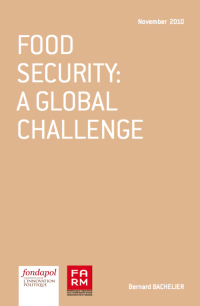
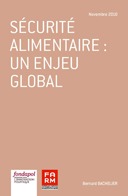






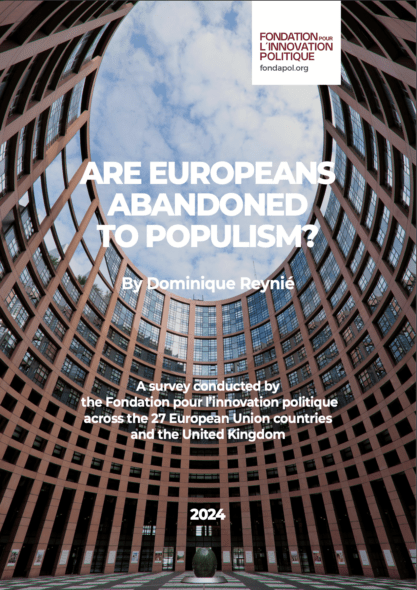
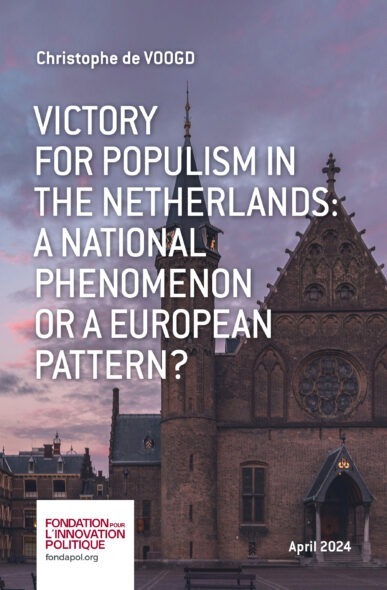

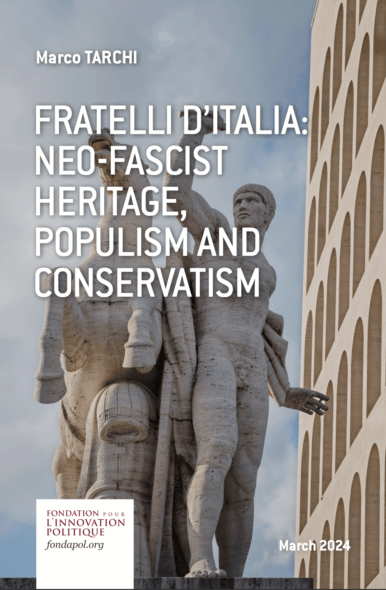
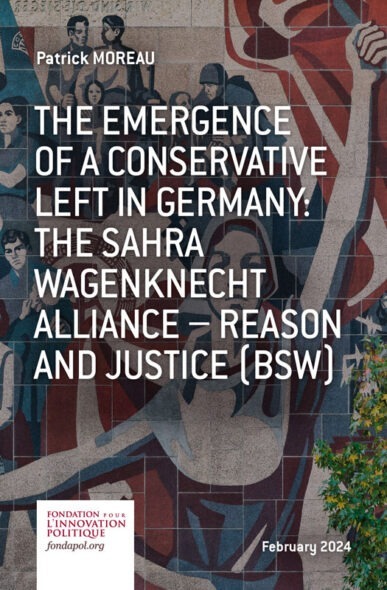
No comments.